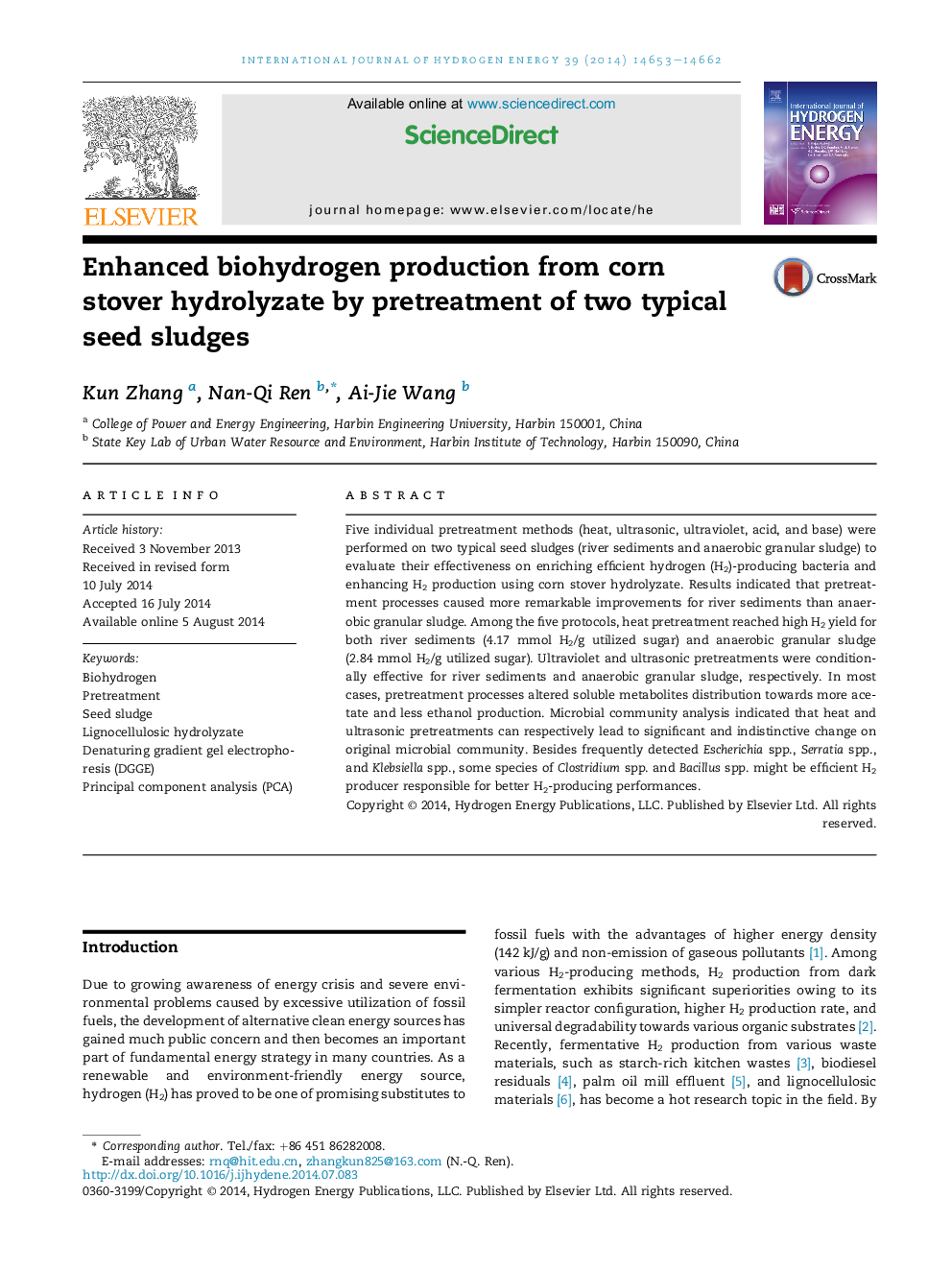| Article ID | Journal | Published Year | Pages | File Type |
|---|---|---|---|---|
| 7718030 | International Journal of Hydrogen Energy | 2014 | 10 Pages |
Abstract
Five individual pretreatment methods (heat, ultrasonic, ultraviolet, acid, and base) were performed on two typical seed sludges (river sediments and anaerobic granular sludge) to evaluate their effectiveness on enriching efficient hydrogen (H2)-producing bacteria and enhancing H2 production using corn stover hydrolyzate. Results indicated that pretreatment processes caused more remarkable improvements for river sediments than anaerobic granular sludge. Among the five protocols, heat pretreatment reached high H2 yield for both river sediments (4.17 mmol H2/g utilized sugar) and anaerobic granular sludge (2.84 mmol H2/g utilized sugar). Ultraviolet and ultrasonic pretreatments were conditionally effective for river sediments and anaerobic granular sludge, respectively. In most cases, pretreatment processes altered soluble metabolites distribution towards more acetate and less ethanol production. Microbial community analysis indicated that heat and ultrasonic pretreatments can respectively lead to significant and indistinctive change on original microbial community. Besides frequently detected Escherichia spp., Serratia spp., and Klebsiella spp., some species of Clostridium spp. and Bacillus spp. might be efficient H2 producer responsible for better H2-producing performances.
Keywords
Related Topics
Physical Sciences and Engineering
Chemistry
Electrochemistry
Authors
Kun Zhang, Nan-Qi Ren, Ai-Jie Wang,
